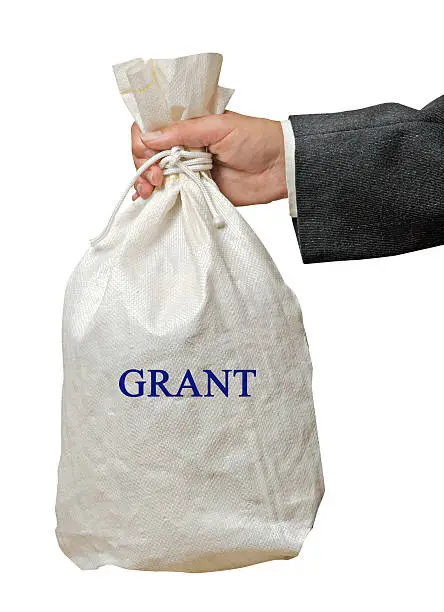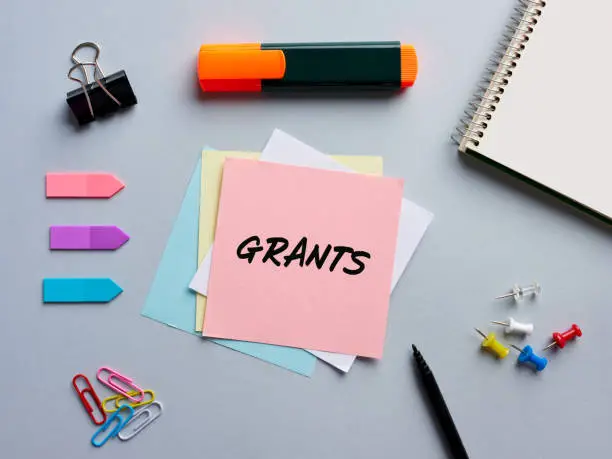Are you passionate about helping animals and want to expand your nonprofit animal rescue efforts? Finding the right funding through nonprofit animal rescue grants can be the key to turning your dreams into action.
Whether you’re just starting your rescue organization or you’ve been operating for years, securing financial support can make all the difference.
In this comprehensive guide, we’ll delve deep into what nonprofit animal rescue grants are, where to find them, and how to successfully apply for them to maximize your chances of success. Plus, we’ll share valuable tips, strategies, and tools to help you navigate the grant writing process with ease.
What Are Nonprofit Animal Rescue Grants?
Nonprofit animal rescue grants are financial awards provided to animal rescue organizations to support their mission of saving, rehabilitating, and rehoming animals in need.
These grants can come from a variety of sources, including private foundations, government agencies, corporate sponsors, and community organizations. The funding can be allocated for numerous purposes such as:
- Animal shelter construction and maintenance
- Medical expenses for rescued animals
- Community outreach and education programs
- Adoption initiatives
- Spay/neuter programs
- Emergency rescue operations
Having access to these grants allows your organization to operate more effectively, expand your services, and ultimately save more lives. However, navigating the world of grant funding can be complex and competitive.
Understanding the types of grants available and the application process is crucial to securing the support your rescue needs.
Types of Nonprofit Animal Rescue Grants
There are several types of nonprofit animal rescue grants, each designed to meet different needs and objectives. Understanding these types can help you target the right opportunities for your organization.
1. General Operating Grants
General operating grants provide unrestricted funding that can be used for the everyday expenses of running your animal rescue. This includes costs such as:
- Staff salaries
- Facility rent or mortgage
- Utilities
- Administrative costs
- Marketing and outreach
These grants offer flexibility, allowing you to allocate funds where they are most needed. Private foundations and corporate sponsors often provide general operating grants to support the overall mission of nonprofit organizations.
2. Project-Based Grants
Project-based grants are designated for specific projects or programs within your animal rescue. Examples include:
- Launching a new adoption program
- Organizing a community spay/neuter clinic
- Hosting an educational seminar on animal welfare
These grants require detailed project proposals outlining the objectives, timeline, budget, and expected outcomes. They are ideal for initiatives that have clear, measurable goals and can demonstrate a direct impact on your mission.
3. Medical Grants
Medical grants are specifically aimed at covering veterinary costs, which can be a significant expense for animal rescues. These funds can be used for:
- Surgeries
- Treatments for illnesses or injuries
- Vaccinations
- Routine check-ups
Given the high cost of veterinary care, medical grants are essential for ensuring that rescued animals receive the necessary medical attention to recover and thrive.
4. Emergency Grants
Emergency grants provide immediate funding in response to unforeseen crises or natural disasters. Situations that may require emergency grants include:
- Natural disasters affecting large numbers of animals
- Mass rescue operations during emergencies
- Responding to incidents of animal cruelty on a large scale
These grants are typically time-sensitive and require prompt application to address urgent needs effectively.
5. Endowment Grants
Endowment grants are intended to create long-term financial stability for your animal rescue. By establishing an endowment fund, your organization can generate income from investments to support ongoing operations and programs. This type of grant helps ensure that your rescue can continue its mission sustainably over time.
Where to Find Nonprofit Animal Rescue Grants
Finding the right nonprofit animal rescue grants involves exploring various funding sources. Here are some key places to look:
1. Grant Databases
Grant databases are invaluable resources for identifying funding opportunities. Some of the most popular grant databases include:
- GrantStation: Offers a comprehensive database of grants for nonprofits, including those focused on animal rescue.
- Foundation Center: Provides extensive information on private foundations and the grants they offer.
- Grants.gov: The official U.S. government portal for federal grants, including those for animal welfare programs.
These platforms allow you to search for grants based on criteria such as location, funding amount, and specific focus areas.
2. Government Grants
Government agencies at both the federal and state levels offer grants to support animal welfare initiatives. In the United States, notable sources include:
- U.S. Department of Agriculture (USDA): Provides funding for animal health and welfare programs.
- U.S. Department of Justice (DOJ): Offers grants for programs that address animal cruelty and neglect.
- State Agriculture Departments: Many states have their own grant programs to support local animal rescue efforts.
Government grants often require compliance with specific regulations and reporting requirements, so it’s important to thoroughly understand the guidelines before applying.
3. Private Foundations
Private foundations are a significant source of funding for animal rescue grants. Some prominent foundations include:
- The Petco Foundation: Supports programs that improve the lives of pets and their communities.
- The ASPCA: Offers various grants to animal welfare organizations.
- Banfield Foundation: Provides grants for veterinary care and animal rescue initiatives.
- The Doris Day Animal Foundation: Focuses on grants for spay/neuter programs and animal welfare.
These foundations often have specific grant cycles, application deadlines, and eligibility criteria, so it’s essential to stay informed about their requirements.
4. Corporate Sponsorships
Many corporations have philanthropic programs that include grant opportunities for nonprofit organizations. Companies such as:
- Chewy: Offers grants to support animal welfare organizations.
- PetSmart: Provides funding for rescue and shelter initiatives.
- Bayer Animal Health: Supports animal welfare projects through grants.
Corporate sponsorships can also include in-kind donations, volunteer support, and promotional partnerships, which can be beneficial beyond just financial assistance.
5. Local Community Organizations
Local community foundations, businesses, and individual philanthropists can be valuable sources of animal rescue grants. Engaging with your local community can help you tap into:
- Community foundations: These organizations often have grant programs tailored to local needs.
- Local businesses: Small businesses may be willing to sponsor events or provide grants for specific projects.
- Individual donors: Building relationships with philanthropists in your area can lead to substantial support for your rescue efforts.
How to Apply for Nonprofit Animal Rescue Grants
Applying for nonprofit animal rescue grants requires careful planning and attention to detail. Here’s a step-by-step guide to help you through the process:
1. Understand the Requirements
Before you start writing your grant proposal, it’s crucial to thoroughly review the eligibility criteria and guidelines for each grant you’re interested in. Pay attention to:
- Eligibility: Ensure your organization meets the requirements, such as being a registered nonprofit, having a specific mission, or operating in a particular region.
- Funding Amount: Be aware of the minimum and maximum funding amounts.
- Purpose: Understand what the grant funds can and cannot be used for.
- Deadlines: Note the application submission deadlines and any pre-application requirements.
2. Craft a Compelling Case
Your grant proposal should clearly articulate why your organization deserves funding. To craft a compelling case:
- Tell Your Story: Share the history of your animal rescue, your mission, and the impact you’ve had on the community and animals.
- Provide Data: Use statistics to demonstrate your effectiveness. For example, “In the past year, we have rescued 500 animals, provided medical care to 400, and found loving homes for 350.”
- Highlight Needs: Explain the specific needs your grant will address. Use real-life examples to illustrate the challenges you face.
- Show Impact: Describe how the grant will help you achieve your goals and the positive outcomes you expect.
3. Follow Instructions Carefully
Grant applications come with specific instructions that must be followed precisely. Common requirements include:
- Format: Adhere to word limits, formatting guidelines, and required sections.
- Documentation: Provide necessary documents such as proof of nonprofit status, financial statements, and letters of support.
- Submission Method: Follow the specified method for submitting your application, whether it’s online, by mail, or through another channel.
Failure to comply with instructions can result in your application being disqualified.
4. Write a Realistic Budget
A detailed and realistic budget is a critical component of your grant proposal. To create an effective budget:
- Itemize Costs: Break down expenses by category, such as personnel, supplies, equipment, and program costs.
- Justify Expenses: Explain why each expense is necessary for your project or operation.
- Be Transparent: Ensure your budget is clear and free of ambiguities. Funders need to understand how their money will be used.
- Include Contingencies: Consider including a contingency line item to cover unexpected costs.
5. Submit on Time
Meeting deadlines is essential in the grant application process. To ensure timely submission:
- Create a Timeline: Develop a timeline that includes all deadlines and intermediate milestones.
- Prepare Early: Start working on your application well in advance to avoid last-minute rushes.
- Double-Check: Review your application for completeness and accuracy before submission.
Late applications are typically not considered, so punctuality is non-negotiable.
Tips for Increasing Your Grant Success Rate
Securing nonprofit animal rescue grants can be highly competitive, but these additional tips can help boost your success rate:
1. Build Relationships with Funders
Establishing strong relationships with potential funders can significantly enhance your chances of receiving grants. Here’s how:
- Attend Events: Participate in grant workshops, webinars, and networking events to meet funders in person.
- Communicate Regularly: Keep funders informed about your organization’s progress and successes.
- Express Gratitude: Thank funders for their support and provide updates on how their contributions have made a difference.
2. Maintain a Solid Track Record
A proven history of effectively managing grant funds makes your organization more attractive to potential funders. To build a solid track record:
- Keep Detailed Records: Maintain comprehensive records of how previous grants were used and the outcomes achieved.
- Report Outcomes: Provide regular reports to funders detailing the impact of their support.
- Show Accountability: Demonstrate responsible financial management and transparency in all your operations.
3. Stay Organized
Managing multiple grant applications can be challenging. Staying organized helps ensure you don’t miss deadlines or overlook important details. Tips for staying organized include:
- Use a Grant Management System: Tools like GrantHub or Fluxx can help track applications, deadlines, and requirements.
- Create a Spreadsheet: Maintain a simple spreadsheet to monitor grant opportunities, application statuses, and key dates.
- Delegate Tasks: Assign specific roles to team members to handle different aspects of the grant application process.
4. Target the Right Grants
Focusing on grants that align with your mission and specific needs increases your likelihood of success. Consider the following:
- Mission Alignment: Ensure the grant’s objectives match your organization’s mission and goals.
- Specific Focus: Apply for grants that address your specific needs, whether it’s medical care, facility improvements, or community outreach.
- Funding Amount: Match the grant’s funding range with your financial requirements.
Common Pitfalls to Avoid
While applying for nonprofit animal rescue grants, be mindful of these common mistakes that can jeopardize your application:
1. Lack of Clarity
Unclear or vague proposals can confuse reviewers and undermine your credibility. Ensure your proposal is:
- Well-Structured: Use clear headings and logical flow.
- Concise: Avoid unnecessary jargon and keep your writing straightforward.
- Specific: Provide detailed information about your projects and how funds will be used.
2. Inadequate Research
Applying for grants without thoroughly researching the funder’s priorities can lead to mismatched applications. Take the time to:
- Understand Funder Priorities: Align your proposal with the funder’s goals and interests.
- Follow Guidelines: Adhere strictly to the application instructions and requirements.
- Tailor Each Application: Customize your proposal for each grant, rather than using a one-size-fits-all approach.
3. Poor Budget Planning
A poorly planned budget can raise red flags for funders. Avoid:
- Underestimating Costs: Ensure all potential expenses are accounted for.
- Overinflating Expenses: Be realistic and avoid padding your budget.
- Lack of Justification: Clearly explain each budget item and its necessity.
4. Ignoring the Impact
Funders want to see the tangible impact of their investment. Make sure to:
- Highlight Outcomes: Clearly state the expected results and benefits of your project.
- Use Data: Support your claims with relevant statistics and evidence.
- Demonstrate Sustainability: Show how your project will continue to have an impact beyond the grant period.
Case Studies: Success Stories in Securing Nonprofit Animal Rescue Grants
Understanding how other organizations have successfully secured grants can provide valuable insights and inspiration. Here are a couple of success stories:
1. Paws for Hope Rescue
Paws for Hope Rescue, a small animal rescue based in Texas, secured a $25,000 grant from the Petco Foundation to expand their medical care services. By presenting a detailed budget and showcasing their success in rescuing and rehabilitating animals, they demonstrated the direct impact of the funding. The grant allowed them to hire additional veterinary staff and upgrade their medical facilities, resulting in a 30% increase in successful animal rehabilitations within the first year.
2. Hope Haven Shelter
Hope Haven Shelter, located in California, received a $50,000 grant from a local community foundation to launch a spay/neuter program. Their proposal highlighted the rising stray animal population in their area and the need for preventive measures. By providing data on the decrease in stray animals post-implementation, Hope Haven Shelter effectively showcased the program’s success and secured continued funding for future expansion.
Utilizing Data and Statistics
Incorporating data, statistics, and facts into your grant proposals can significantly strengthen your case. Here are some key points to consider:
- Impact Metrics: Quantify your achievements, such as the number of animals rescued, treated, and adopted.
- Needs Assessment: Use data to highlight the demand for your services in your community.
- Funding Outcomes: Demonstrate how previous grants have been used effectively by presenting measurable outcomes.
Example Statistics
- According to the American Society for the Prevention of Cruelty to Animals (ASPCA), approximately 6.5 million companion animals enter U.S. animal shelters every year.
- PetSmart Charities has invested over $100 million in animal welfare initiatives since its inception.
- A study by The Humane Society found that spay/neuter programs can reduce the stray animal population by up to 70% over five years.
Leveraging Online Resources and Tools
There are numerous online tools and resources available to assist you in the grant writing process:
- Grant Writing Software: Tools like GrantHub and Instrumentl help streamline the application process by organizing grant opportunities and tracking deadlines.
- Templates and Samples: Access templates for grant proposals, budgets, and letters of support to ensure your application is professional and comprehensive.
- Educational Resources: Websites like GrantSpace offer webinars, articles, and guides on effective grant writing techniques.
Enhancing Your Grant Writing Skills
Improving your grant writing skills can significantly increase your success rate. Here are some ways to enhance your abilities:
1. Take a Grant Writing Course
Enroll in a grant writing course to learn the fundamentals and advanced techniques. Courses can provide structured learning and practical exercises to hone your skills.
2. Join Grant Writing Workshops
Participate in workshops and seminars to gain insights from experienced grant writers and funders. These events often include networking opportunities and hands-on training.
3. Read Successful Grant Proposals
Studying successful grant proposals can provide valuable examples of effective writing and presentation. Analyze how these proposals structure their arguments, present data, and align with funder priorities.
4. Seek Feedback
Before submitting your grant application, seek feedback from colleagues or mentors. Constructive criticism can help you refine your proposal and address any weaknesses.
Common Grant Application Mistakes to Avoid
Avoiding common pitfalls can enhance the quality of your grant applications. Here are some mistakes to watch out for:
1. Submitting Generic Proposals
Avoid using generic language that doesn’t specifically address the grantor’s priorities. Tailor each proposal to align with the specific goals and requirements of the grant you’re applying for.
2. Neglecting to Proofread
Grammatical errors and typos can detract from the professionalism of your proposal. Always proofread your application or have someone else review it before submission.
3. Overlooking the Executive Summary
The executive summary is often the first section funders read. Ensure it succinctly captures the essence of your proposal, including your mission, the problem you’re addressing, and how the grant will help.
4. Failing to Demonstrate Sustainability
Funders want to invest in projects that will have a lasting impact. Clearly articulate how your project will continue to thrive after the grant period ends.
Monitoring and Reporting
Once you’ve secured a grant, effective monitoring and reporting are essential to maintain a good relationship with funders and to lay the groundwork for future grants. Here’s how to manage this:
1. Track Progress
Regularly monitor the progress of your funded projects against the goals and timelines outlined in your proposal.
2. Maintain Detailed Records
Keep comprehensive records of how grant funds are being used, including receipts, invoices, and progress reports.
3. Provide Regular Updates
Communicate with your funders through periodic updates, highlighting achievements, challenges, and how the funds have been utilized.
4. Submit Final Reports
At the end of the grant period, submit a final report that summarizes the outcomes and impact of the funded project. Include data, success stories, and any relevant metrics.
Building a Strong Grant Proposal
A strong grant proposal is clear, compelling, and well-organized. Here are the key components to include:
1. Cover Letter
Introduce your organization and summarize your request. Make it personal and engaging to capture the funder’s interest from the start.
2. Executive Summary
Provide a concise overview of your proposal, including your mission, the problem you’re addressing, and the requested funding amount.
3. Organization Background
Describe your organization’s history, mission, and achievements. Highlight your experience and capacity to manage the proposed project.
4. Problem Statement
Clearly define the issue you’re addressing with the grant. Use data and real-life examples to illustrate the significance and urgency of the problem.
5. Project Description
Detail the project or program you’re seeking funding for. Include objectives, activities, timelines, and the expected impact.
6. Budget
Present a detailed and realistic budget that outlines how the grant funds will be used. Ensure transparency and alignment with project goals.
7. Evaluation Plan
Explain how you will measure the success of your project. Define the metrics and methods you will use to assess outcomes.
8. Sustainability Plan
Describe how the project will continue to operate and sustain its impact after the grant period ends.
9. Conclusion
Reiterate the importance of your project and express gratitude for the funder’s consideration.
Leveraging Technology in Grant Writing
Utilizing technology can streamline the grant writing and management process. Here are some tech tools to consider:
1. Project Management Software
Tools like Asana or Trello can help you organize tasks, set deadlines, and collaborate with your team during the grant application process.
2. Document Collaboration
Platforms like Google Docs and Microsoft Teams allow multiple team members to work on grant proposals simultaneously, ensuring everyone is on the same page.
3. Data Management Tools
Use tools like Microsoft Excel or Google Sheets to manage and analyze data that supports your grant application.
4. Grant Tracking Systems
Software like GrantHub helps you keep track of grant deadlines, application statuses, and reporting requirements.
The Importance of Storytelling in Grant Writing
Effective storytelling can make your grant proposal stand out. Here’s how to incorporate it:
1. Humanize Your Cause
Share stories of individual animals you’ve rescued, highlighting their journey from rescue to adoption. Personal stories can create an emotional connection with funders.
2. Use Vivid Descriptions
Paint a clear picture of the challenges you face and the impact of your work. Use descriptive language to convey the urgency and importance of your mission.
3. Highlight Successes
Showcase your organization’s successes through testimonials, case studies, and before-and-after scenarios. Demonstrating tangible results can build credibility and trust.
Engaging Your Community and Funders
Engaging your community and funders can enhance your grant applications and overall support. Here are some strategies:
1. Host Community Events
Organize events such as adoption drives, fundraisers, and awareness campaigns to engage the community and demonstrate your active presence and impact.
2. Leverage Social Media
Use platforms like Facebook, Instagram, and Twitter to share your stories, successes, and ongoing needs. Engaging content can attract potential funders and supporters.
3. Create a Newsletter
Maintain regular communication with your supporters through a newsletter. Share updates, success stories, and information about upcoming projects or funding needs.
4. Collaborate with Other Organizations
Partnering with other nonprofits, businesses, and community groups can amplify your reach and increase your chances of securing funding through joint grant applications or collaborative projects.
Staying Informed About Grant Opportunities
Staying up-to-date with the latest grant opportunities is essential for continuous funding. Here’s how to stay informed:
1. Subscribe to Grant Newsletters
Subscribe to newsletters from grant databases, foundations, and government agencies to receive updates on new grant opportunities and deadlines.
2. Join Professional Associations
Organizations like the Grant Professionals Association (GPA) offer resources, networking opportunities, and information on grant openings.
3. Follow Relevant Blogs and Websites
Stay informed by following blogs and websites dedicated to nonprofit funding and grant writing. These platforms often share tips, success stories, and updates on funding trends.
Measuring and Communicating Impact
Demonstrating the impact of your work is crucial for securing grants and maintaining funder support. Here’s how to effectively measure and communicate your impact:
1. Set Clear Goals and Objectives
Define what success looks like for each project or program. Setting measurable goals allows you to track progress and evaluate outcomes accurately.
2. Use Key Performance Indicators (KPIs)
Identify KPIs that align with your goals, such as:
- Number of animals rescued
- Percentage of animals adopted
- Reduction in stray animal population
- Number of community outreach events conducted
3. Collect and Analyze Data
Gather data regularly and analyze it to assess the effectiveness of your programs. Use this information to make informed decisions and improvements.
4. Share Success Stories
Highlight individual success stories that showcase the tangible impact of your work. Use testimonials from adopters, volunteers, and beneficiaries to add a personal touch.
5. Create Impact Reports
Develop comprehensive impact reports that summarize your achievements, data, and stories. These reports can be shared with funders, stakeholders, and the community to demonstrate your organization’s effectiveness and accountability.
Leveraging the Grant Writing Academy Newsletter
To enhance your grant writing skills and stay informed about the latest tips, strategies, templates, and tools, consider subscribing to the Grant Writing Academy Newsletter. By subscribing, you’ll gain access to:
- Expert Advice: Learn from seasoned grant writers and industry experts.
- Exclusive Resources: Access templates, sample proposals, and budgeting tools designed to streamline your grant application process.
- Latest Trends: Stay updated on the newest trends and best practices in grant writing and nonprofit funding.
- Success Stories: Read about other organizations’ grant successes and learn from their experiences.
- Webinars and Workshops: Participate in exclusive training sessions to refine your grant writing skills.
Subscribe to the Grant Writing Academy Newsletter today and take your grant writing efforts to the next level!
Conclusion
Securing nonprofit animal rescue grants is a vital component of sustaining and expanding your animal rescue efforts. By understanding the types of grants available, knowing where to find them, and mastering the application process, you can significantly increase your chances of obtaining the funding you need. Remember to craft compelling proposals, maintain strong relationships with funders, and continuously improve your grant writing skills.
Don’t let financial constraints limit your ability to save and care for animals in need. With the right approach and resources, your animal rescue can thrive and make a lasting impact on the lives of countless animals and the communities you serve.
Remember, every animal saved is a victory—let’s make it happen! And for even more tips, strategies, templates, and tools, subscribe to the Grant Writing Academy Newsletter and empower your organization to achieve greater success.
Additional Resources
To further support your journey in securing nonprofit animal rescue grants, here are some additional resources and links:
- Animal Welfare Grants Directory: A comprehensive directory of grants available for animal welfare organizations.
- The Foundation Center: Access extensive data on private foundations and grant opportunities.
- GrantSpace by Candid: Offers training, resources, and tools for nonprofits seeking grants.
- Nonprofit Hub: Provides articles, webinars, and guides on various aspects of nonprofit management and grant writing.
- The Humane Society of the United States (HSUS): Offers resources and information on animal welfare initiatives and funding opportunities.
Frequently Asked Questions (FAQs)
1. How competitive are nonprofit animal rescue grants?
Nonprofit animal rescue grants can be highly competitive due to the high demand and limited funding availability. To improve your chances, ensure your proposal is well-crafted, aligns with the funder’s priorities, and clearly demonstrates the impact of your work.
2. Can small animal rescues apply for the same grants as larger organizations?
Yes, many grants are open to animal rescues of all sizes. However, some grants may have specific eligibility criteria, such as serving a particular geographic area or focusing on specific types of animals. Always review the guidelines to ensure your organization qualifies.
3. How long does the grant application process take?
The timeline can vary widely depending on the grantor. Some grants have a quick turnaround time, while others may take several months from application to funding. It’s important to plan accordingly and apply well before your project needs to begin.
4. Do I need to hire a professional grant writer?
While it’s not mandatory to hire a professional grant writer, doing so can increase your chances of success, especially if you’re new to grant writing. Professional grant writers bring expertise and experience that can help craft compelling and effective proposals.
5. What should I do if my grant application is rejected?
If your application is rejected, seek feedback from the funder to understand the reasons. Use this feedback to improve future applications. Additionally, continue to apply for other grants and explore alternative funding sources to support your animal rescue efforts.
Final Thoughts
Navigating the landscape of nonprofit animal rescue grants can be challenging, but with persistence, strategic planning, and the right resources, your organization can secure the funding needed to save and improve the lives of countless animals. Embrace the process, leverage available tools and support networks, and stay committed to your mission. Every grant secured is a step closer to a more compassionate and humane world for animals everywhere.
For ongoing support and expert guidance, subscribe to the Grant Writing Academy Newsletter and join a community of dedicated grant seekers committed to making a difference.
Subscribe Now and take the next step toward securing the grants that will fuel your animal rescue mission!
Additional Resources and Support
a) Expand Your Knowledge
The grant writing field is always evolving. Keep learning and improving your skills to stay competitive.
Recommended Resources:
- Request for Proposal Success: How to Write Proposals That Win: Learn the techniques and strategies to create standout proposals.
- Tech Startup Funding Secrets: Navigating Grants for Maximum Growth: Perfect for those in the tech sector looking to leverage grants for scaling.
- Grant Proposal Guide for Environmental Projects: Tailored for environmental initiatives seeking to secure impactful funding.
- The Ultimate Guide to Federal Grant Applications: Techniques for Success: Master the complexities of federal grants with actionable insights.
Explore More Books Here
b) Invest in Expert Guidance
Join one of our mentorship programs for tailored advice and support:
Mentorship Programs:
- 3-Month Mentorship: The Foundation Builder: A short-term plan to refine your grant writing skills and win your first (or next) grant.
- 6-Month Mentorship: The Proposal Pro: Dive deeper into strategies, proposal reviews, and funding plans.
- 1-Year Mentorship: The Funding Champion: Build long-term success with comprehensive guidance, unlimited reviews, and exclusive resources.
C) Book a One-on-One Consultation
Sometimes you just need personalized advice to tackle challenges or fine-tune your strategy. Let’s work together to solve your unique grant writing challenges.






